Information
sheet on Wasps.
ABN 47 091 891 253
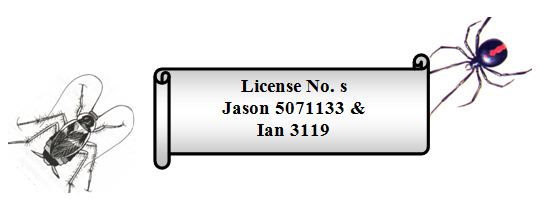
Office Phone: (02) 9631 3585
Jason’s Mobile: 0414 434 958
email: adaptablepc@ozemail.com.au
ABN 47 091 891 253

Office Phone: (02) 9631 3585
Jason’s Mobile: 0414 434 958
email: adaptablepc@ozemail.com.au
Wasps belong to the order Hymenoptera, along with bees and ants, making it one of the larger groups. There are some 15,000 species in this group in Australia.
Among wasps are a number of both predatory and parasitic pests.
Some are solitary while others are quite social, forming complex societies that involve a high degree of communication.
Eggs of the parasitic species are usually laid in or on the host, while foliage eater’s eggs are laid on plants. In the more socially structured groups the eggs are tended in nests by workers castes.
The most notorious of these in the southeastern states of Australia would be the European wasp. This fast flying wasp has clear wings. The sterile worker females are about 12 – 15 mm long while the Queens and males are up to 20 mm in length. Their nests range in size from small up to 5 meters in breadth, with as many as 100,000 individuals. They nest mostly in tree stumps, rockeries, wall cavities and sometimes roof voids.
The European wasp may sting several times if disturbed or agitated and I can vouch that the sting is extremely painful. Most pest controllers use new and very effective chemicals to treat nests but do so in the evening or night when the wasps are less active. Having killed off the live insects the nest should usually be burned to ensure the pupae in the cells are also destroyed.
The European wasp is identified from most common neighbors by being yellow with black on the body as opposed to most bees and other wasps that have black bodies with yellow or white markings.
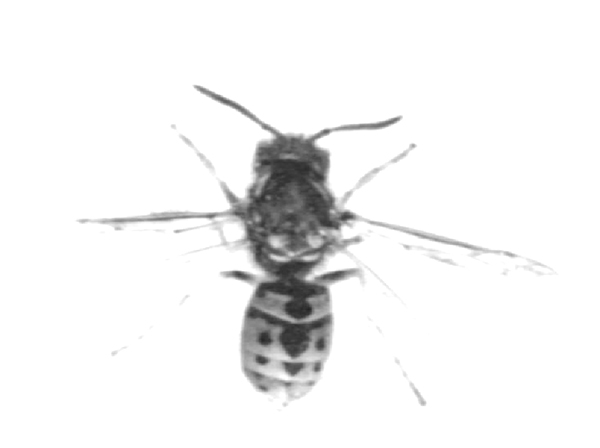
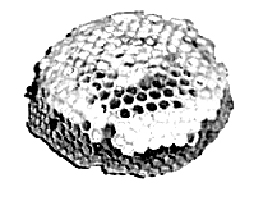
This more common wasp around homes builds a nest that is brown and white and gives its name to the group.
Nests are built on a stalk that is attached to window frames, eaves, alarm boxes, bushes, and any dry safe place.
These insects build and fly by day and rest through the night. They are communal and build together. They generally have small nests of less than 20 – 50 cells, but in advantageous conditions will have larger nests. (The one to the left over six inches in diameter.)
Again pest controllers although capable of treating these by day mostly work them in the early morning or late afternoon.
To ensure they do not return the stalk must be removed and the area sprayed or dusted to deter rebuilding. Papernest Wasps can sting and some people are allergic to them but they are much less aggressive to the European wasps.
Both the next two species are harmless to humans and pets even though they are often in our gardens. They will often hang around plants and or lawns. They look dangerous to the untrained eye and pest controllers are often called but there is no real treatment.
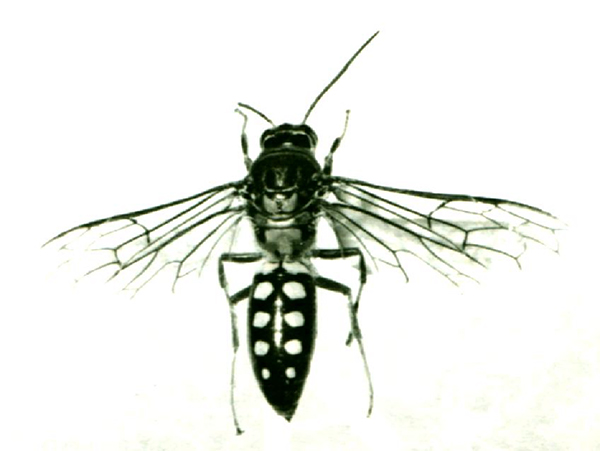
These groups are slender, often with a brightly colored body. Antennae are long, with wings sometimes blue or orange brown. The female often has a long ovipositor at the end of the abdomen that looks like a “Stinger” but is only used for depositing eggs. A common species is the orchid dupe, which has dark wings and distinct white spots along the body.
The many members of this family are all parasites of the young of other insects.
The female uses the long ovipositor to lay an egg or eggs into the body of the host.
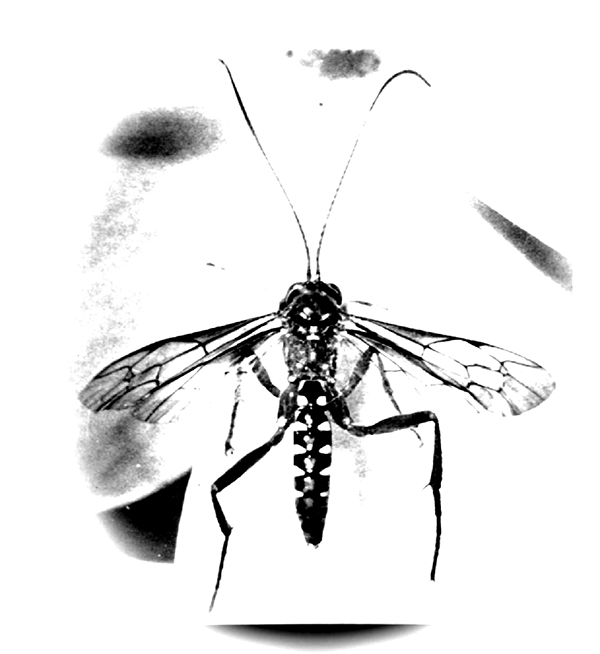
In most species the male is winged but the female is wingless. As both sexes feed mainly on nectar the male flies carrying the female to food, and mating occurs in flight.
The wingless females have modified legs for burrowing in the soil to locate hosts.
Their larvae are parasitic on scarab beetles and other ground dwelling insects.
These wasps were introduced in lumber from New Zealand. They are pests of timber and attack mostly pine trees.
They are mostly a forestry pest but can become an urban pest controller’s problem if infested timber has been used in a house while the eggs are still inside. Once the larvae pupate it is possible for the adult insect to emerge from a hole about 6 mm in diameter with clients fearing a borer infestation.
The female is metallic blue with a prominent ovipositor, the male while also metalicc blue has an organge band around the abdomen.
Again they are of no harm to humans but can leave unsightly holes in timber in use. They require no treatment as they will not infest sawn and dry timber.
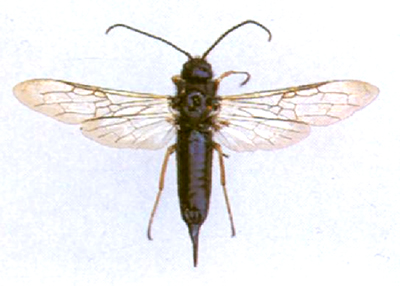
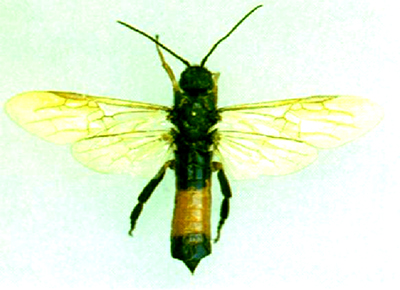
At ADAPTABLE Pest Control we are always happy to respond to wasp calls for clients.
Treatment can be carried out by non-chemical approaches for paper nest wasp by nest removal in plastic bags.
With chemical treatments again there are a number of control options. Things like the species, the size of the population, the distribution of the problem, the type of construction of buildings as well as many other factors will govern them.
It is important to note that a nest will not be eradicated unless all pupae are also killed. Often a nest can be successfully eliminated only for a new colony to re-establish a new nest.
We try to avoid this by spraying or dusting nesting areas but this is not always possible.
Fill Out The Form Below to get a coupon good for Free Consultation by one of our highly trained Pest Control Techs, or give us a call today at 0414 434 958…